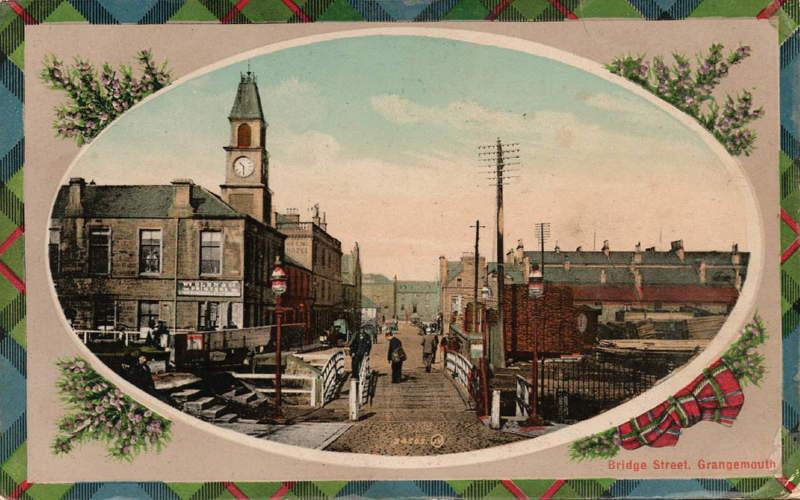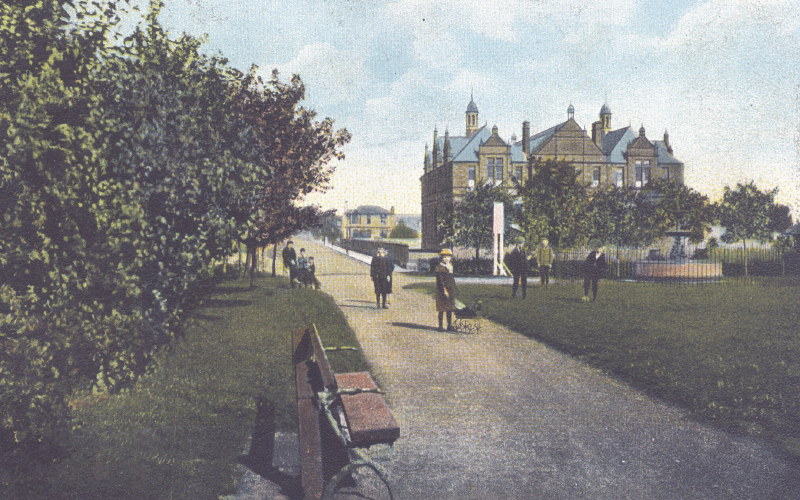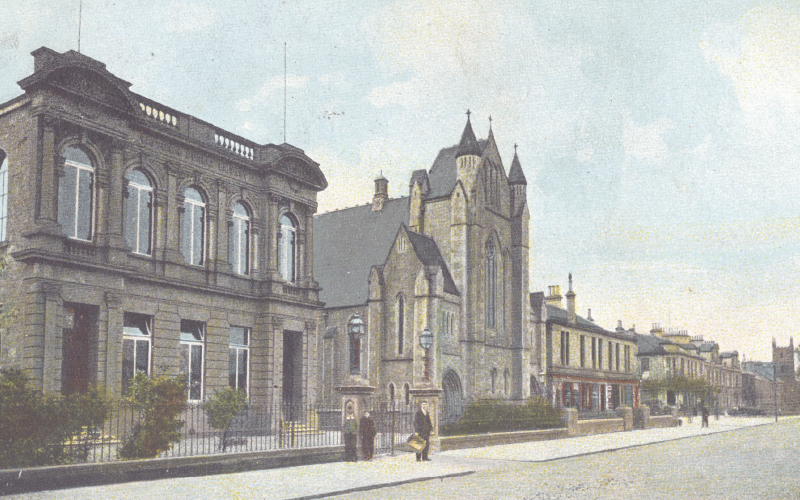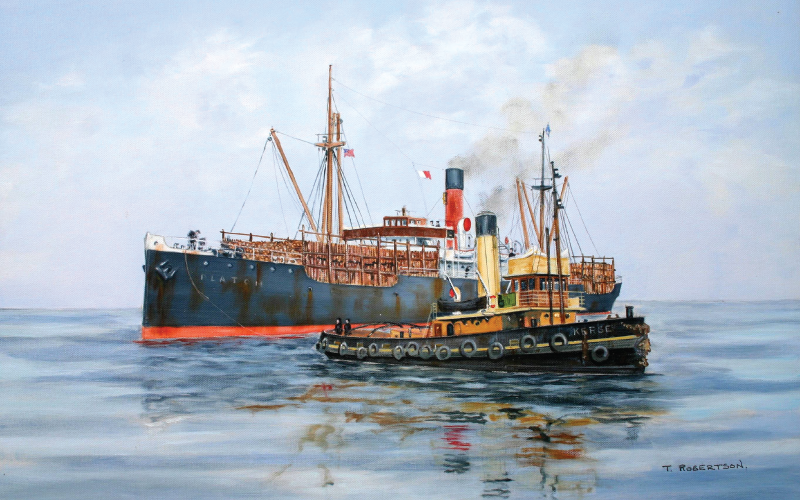Grangemouth Old Town: The Key Eastern Terminus
The first sod of earth for the new village of Sealock was dug by Sir Lawrence Dundas on 10th July 1768. The initial name of Sealock became Grangeburnmouth and then in the 1780’s Grangemouth. The later completion of what would become known as the Forth & Clyde Canal led to an even more rapid expansion of the village. Trading vessels from all over Europe landed cargoes of grain, flax, hemp, iron and timber at Grangemouth. These were transferred in the new basins to canal lighters which carried them to factories and farms across the breadth of Scotland. In return went the coal of Lanarkshire as well as manufactured goods from foundry and mill. Even products of the American states like tobacco, were transported through the canal and exported to the continent. In 1810 the village had a Customs House of its own and by the late 1830s, demand had reached record levels with 750 vessels each year arriving and leaving and over 3000 passing through to the canal.
Enhanced facilities were required and a dock, known today as the ‘old dock’ was built. The river Carron was deepened and the major timber basin enlarged. This work was completed by 1843 by which time the population of the village had grown to over 1,500.
Less than twenty years later the Junction Dock was completed and these additions firmly established Grangemouth as Scotland’s principal timber import centre. The storage, saw milling and distribution of timber became Grangemouth’s most important activity and the foundation of much of its prosperity.
The rapid increase in trade brought prosperity to a growing population, which packed into the land lying between the canal and the river along with a church, school, town hall and a cluster of inns and public houses. Though timber dominated the economy there were other new industries like brick works and activities related to the sea including ship building and repairing, a rope walk, sail making and services like grain storage and ships chandlers.
The decline in the use of the canal and the rise of the railways in the mid 19th century increased the importance of the port. The construction of Carron and Grange Docks provided the Port of Grangemouth with direct access to the River Forth. By the mid Victorian period the growing population began to spill over the canal onto the empty land to the east and a new town began to emerge as the 19th century came to an end.

Aerial view of the boatyard and Grangemouth Old Town

Grangemouth Old Town
Grangemouth New Town
Following the dock extensions in the mid 19th century Grangemouth had expanded from the Old Town into the relatively empty land to the east of the canal. As the new town expanded the legacy of the Dundas family and of William Symington was not lost on the people as several street names and the prominent image of the Charlotte Dundas on the town coat of arms demonstrate.
Building the Burgh
In 1872 the Dundas family passed control of the town of Grangemouth to an elected council and soon the ‘new town’ developed along the road leading eastwards to Bo’ness. A fine library, a new Town Hall and several churches appeared in the Charing Cross area. Grand houses for the wealthy merchants were created along the main road with substantial dwelling houses in adjacent streets for skilled tradesmen and artisans. Careful planning ensured that the streets were wide and well laid out and that they were filled with houses of quality each with its own garden.
In 1882 a new park named Zetland after the Dundas family’s peerage title was opened and by then the heart of the town had effectively moved away from the original site on the banks of the Carron.
There were new schools and churches to serve the population which by the early 20th century was employed in a variety of new activities especially chemicals – in addition to maritime and other vocations connected with the expanding port.
In 1897 the Scottish Cooperative Wholesale Society had established a factory making soap and glycerine. In 1906 the Anglo-American Oil Company constructed the oil storage tanks in the docks, which would go on to be used in the 1914-18 war. In 1919 James Morton’s pioneering Scottish Dyes, which eventually became part of the ICI’s giant dyestuffs division, began production on an eighty acre site in Earl’s Road. From the huge factory came a succession of famous dyes, like the Caledon and Monastral blues and greens as well as medicinal products.
The companies which emerged on the site in more recent years have added a range of agrochemicals and bioscience products. Finally in 1924 Scottish Oils opened the first plant to refine crude oil from the Persian Gulf, and from these small beginnings the massive Grangemouth petro-chemical complex has grown to dominate all other activities in the area. Since the mid 1970s the crude oil has come from the North Sea and there have been a number of major new developments in the processing and manufacturing facilities.

Grangemouth New Town

Grangemouth New Town adjacent to Zetland Park

Grangemouth’s New Town Library opened in 1889
Air & Sea
In July 1939 Scottish Aviation began operations on the empty land south of Bo’ness Road. It was hoped that in time the new airfield would become the principal passenger airport in central Scotland but the outbreak of war in September of that year saw the complex taken over for military purposes. It served as a centre for Spitfire pilots and many died while undergoing the dangerous training exercises.
After the war, priorities had changed and the airport was abandoned. The memorial Spitfire was unveiled in May 2013. In 1968 the Forth Ports Authority was formed and, when major changes in the handling of cargo developed, Grangemouth became Scotland’s largest container port processing a significant portion of Scotland’s imports and exports.

KLM DC3 airliner at the opening of Central Scotland Airport, Grangemouth 1939

Tug boat and Baltic Trader by Tom Robertson
